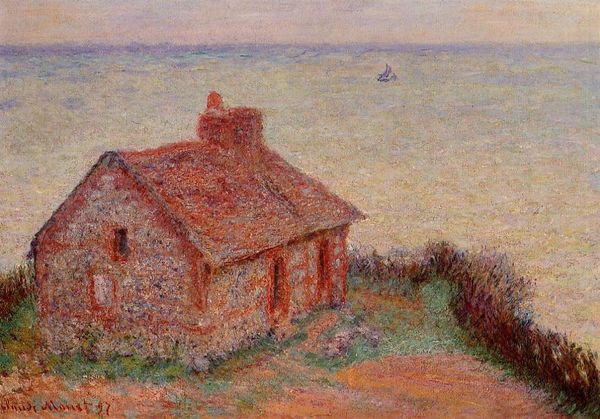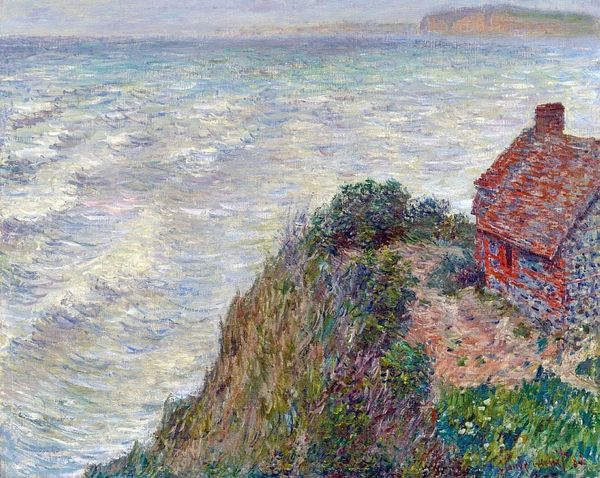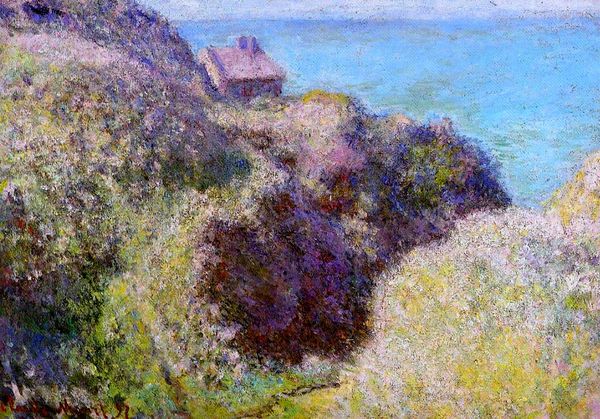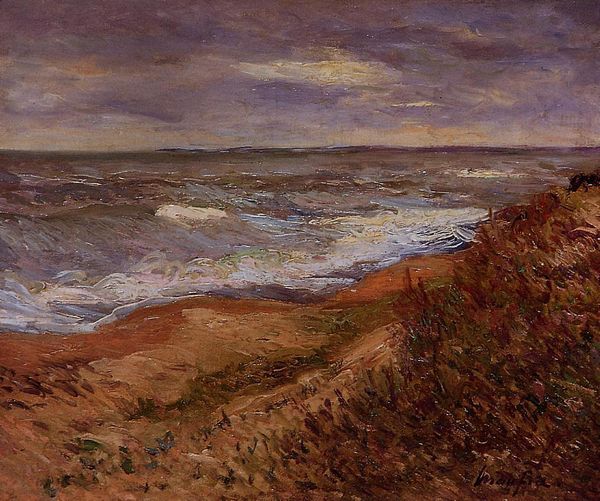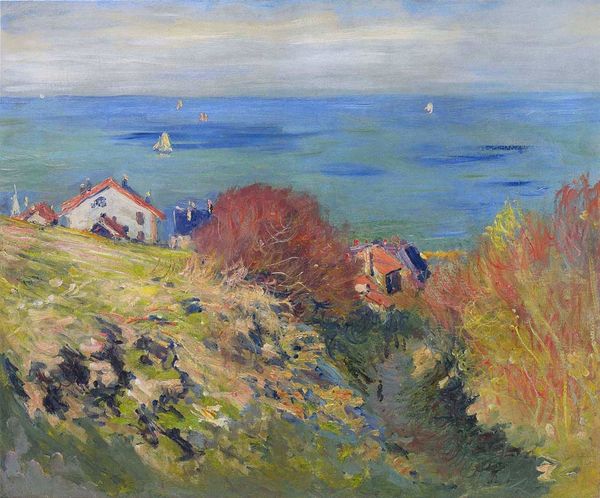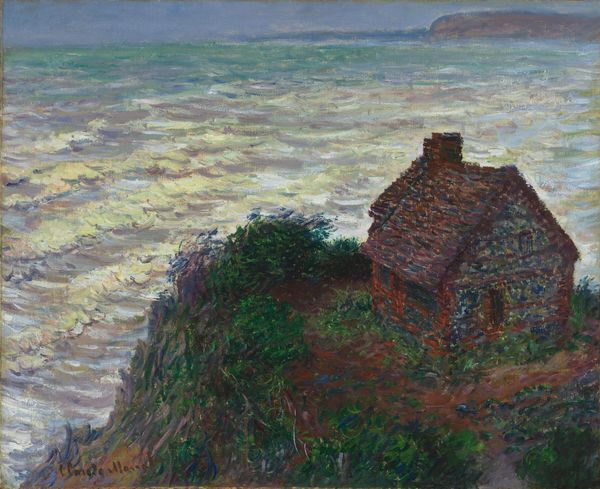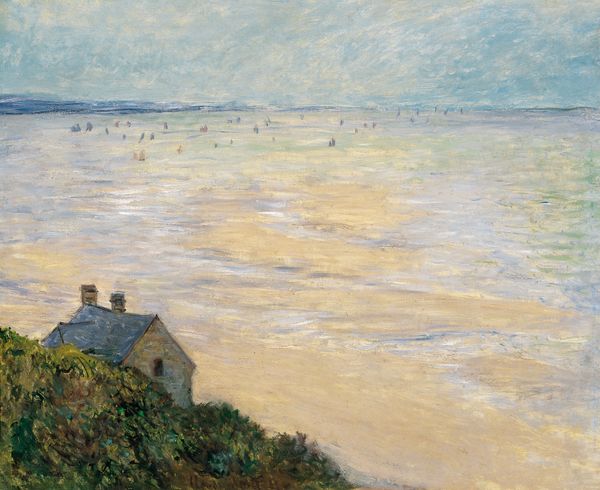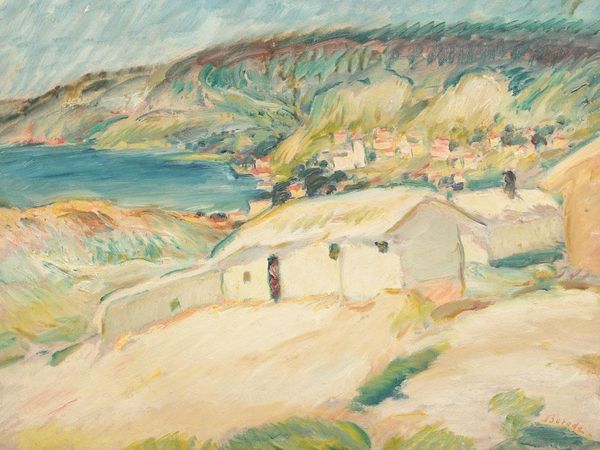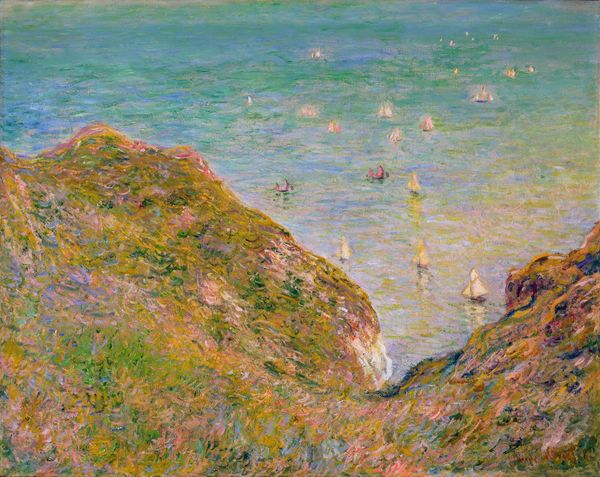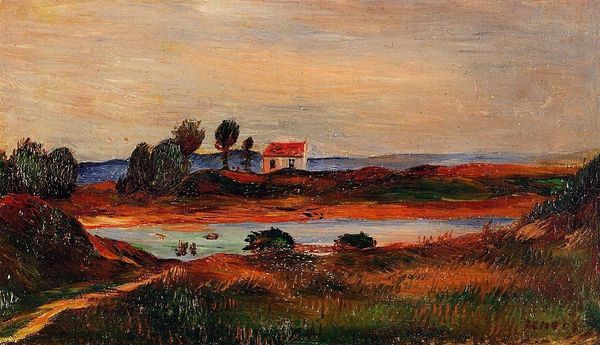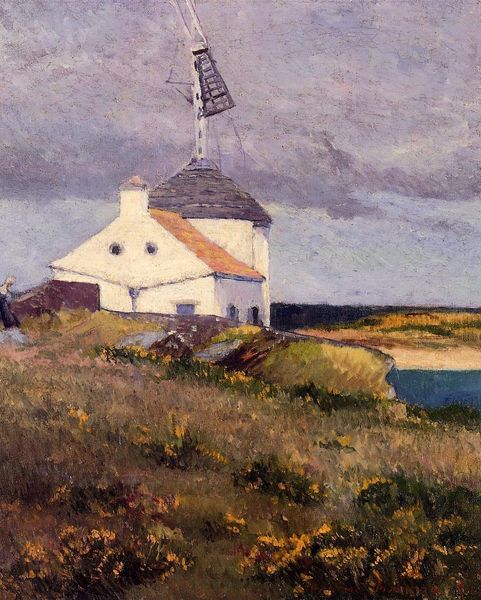
painting, plein-air, oil-paint
#
painting
#
impressionism
#
plein-air
#
oil-paint
#
landscape
#
impressionist landscape
#
oil painting
#
seascape
Dimensions: 81.3 x 66 cm
Copyright: Public domain
Curator: Claude Monet painted "Rising Tide at Pourville" in 1882. The work currently resides here at the Brooklyn Museum. Editor: What strikes me immediately is how restless the sea feels. The painting shimmers with energy, a kind of contained chaos in those choppy waves. Curator: The dynamism you perceive is meticulously constructed. Notice the composition. The cottage and cliff act as a visual anchor on the right, while the sea extends towards a somewhat obscured horizon, divided by the light. This creates a tension. Editor: A tension indeed! The water is all turmoil. Those waves remind me of constant change and challenge, reflecting how nature continuously reshapes coastlines but also human lives, the tides of our destinies. Curator: A suitable reading, though it can also be viewed in terms of brushstrokes. Observe how Monet renders water: individual flicks of color suggesting movement, reflection, light breaking across the surface. Formally, it's less about representing literal waves, and more about conveying their visual sensation. Editor: But visual sensation is laden with cultural meaning! Water, in mythology and religion across cultures, represents the unconscious, cleansing, but also chaos and danger. Those tiny boats out on the horizon feel like symbols of human vulnerability. Curator: A possible association, but the beauty lies in Monet’s articulation of these elements in oil paint. He’s more invested in optical accuracy than narrative symbolism. Consider the color choices, too—how he uses a restricted palette of blues, greens, yellows, and whites to build depth and form. Editor: The color choice is intentional and creates an uneasy contrast. That red-roofed cottage on the cliff, though sturdy, will eventually face the eroding power of those waves. This contrast sparks narrative speculation. Are there tales to be unearthed, passed down through generations, of people who've faced nature head-on? Curator: Perhaps the beauty of "Rising Tide at Pourville" is precisely in its refusal to be pinned down to one meaning. Its strength comes from its material qualities. Editor: Well, my journey through Monet’s artwork allowed me to glimpse, again, nature's profound impact and enduring presence in our lives, both visually and symbolically.
Comments
No comments
Be the first to comment and join the conversation on the ultimate creative platform.
